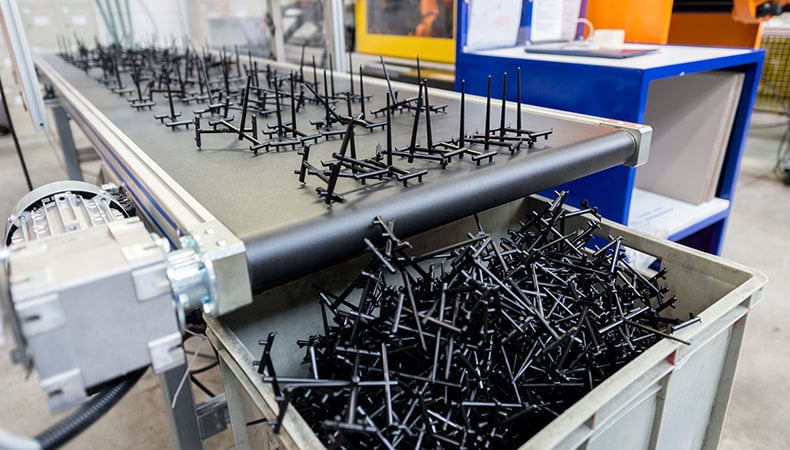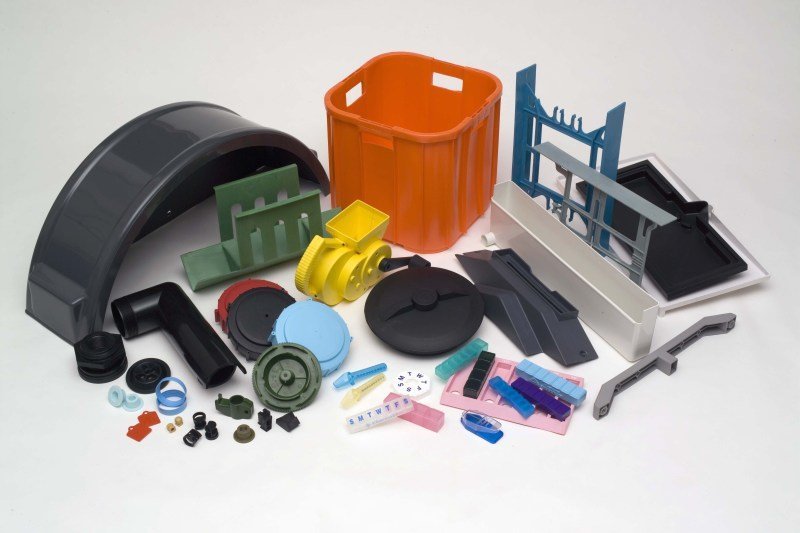The Benefits of Using Plastic Injection Molding for Customized Parts Manufacturing
Recognizing the Fundamentals of Plastic Shot Molding Processes
Plastic injection molding works as a foundation of modern-day manufacturing, supplying a systematic method to generating intricate elements with accuracy. This process not only includes the fundamental actions of melting and infusing materials into molds but also entails a nuanced understanding of numerous influencing variables, such as temperature and pressure. As industries progressively require efficiency and quality, the complexities of this methodology come to be extra vital. Checking out these important elements might disclose just how even small modifications can cause substantial renovations in production end results, questioning about the potential for advancement in this well-known procedure.
What Is Plastic Injection Molding?
Plastic injection molding is a widely used production procedure that transforms thermosetting and polycarbonate products into precise and complex forms. This technique is favored for its capacity to produce high quantities of identical components with phenomenal accuracy, making it an important method in different markets, including automotive, customer goods, and clinical tools.
The procedure involves thawing the selected plastic product and injecting it into a mold and mildew under high pressure. The mold and mildew, designed to the requirements of the preferred part, allows the molten plastic to form as it strengthens and cools down. As soon as the material has actually set, the mold and mildew is opened, and the completed part is expelled.
Plastic shot molding uses a number of advantages, consisting of decreased waste, uniformity in production, and the capacity to include elaborate layouts that may be challenging with various other manufacturing approaches. Furthermore, it supports a wide variety of products, each providing special residential or commercial properties that can be tailored for particular applications. As sectors proceed to introduce, plastic injection molding stays at the forefront, allowing the advancement of innovative products that satisfy advancing consumer needs.
The Shot Molding Refine
The injection molding procedure is an innovative strategy that entails several vital stages to generate high-quality plastic components. Plastic pellets are fed into a warmed barrel where they are thawed right into a thick fluid. This molten plastic is after that injected under high pressure into a precision-engineered mold, which shapes the material into the preferred form.
Once the mold is filled up, the plastic is enabled to cool down and strengthen, taking the shape of the mold and mildew tooth cavity. Air conditioning time is vital, as it impacts the cycle time and the final residential properties of the molded component. After adequate air conditioning, the mold and mildew opens, and the finished part is ejected using ejector pins.

Materials Utilized in Injection Molding
Different products can be used in the shot molding process, each offering special properties that satisfy specific applications. One of the most typically utilized materials include thermoplastics, thermosetting plastics, and elastomers.

Thermosetting plastics, like epoxy and phenolic resins, go through a chemical change throughout the curing process, resulting in an inflexible, inflexible framework. These products are suitable for applications needing high warmth resistance and structural stability, usually utilized in auto parts and electric insulators.
Elastomers, including silicone and rubber-based materials, supply adaptability and resilience. Their special residential or commercial properties make them ideal for applications that demand flexibility, such as gaskets and seals.
Additionally, specialty products like bio-based plastics and compounds are gaining traction for their environmental benefits and improved efficiency characteristics, widening the range of shot molding applications in numerous sectors. Understanding the residential or commercial properties of these products is vital for choosing the proper kind for specific projects.
Advantages of Shot Molding
Injection molding attracts attention as an extremely effective manufacturing procedure that supplies numerous advantages for creating intricate components with precision. One of the most significant benefits is the capability to produce elaborate layouts that would be difficult or difficult to achieve with other techniques (Plastic Injection Molding). The procedure permits tight tolerances and thorough attributes, guaranteeing top quality parts
Additionally, injection molding is known for its fast production abilities, making it a perfect selection for high-volume manufacturing. Once the mold is produced, parts can be generated quickly, decreasing lead times and enhancing general productivity. This effectiveness not just reduces manufacturing costs however likewise offers an one-upmanship in the marketplace.
The convenience of materials made use of in injection molding better improves its charm. A variety of thermoplastics and thermosetting polymers can be utilized, enabling producers to pick materials that ideal satisfy their specific needs, including warm, flexibility, and strength resistance.
Furthermore, the process lessens waste, as excess material can often be reused and reused. This sustainability element adds to a minimized ecological impact, making injection molding an accountable manufacturing choice. Generally, the benefits of shot molding make it a favored approach for many markets.
Aspects Impacting Item Quality
While countless elements can influence product top quality in injection molding, understanding these elements is important for accomplishing optimum results. Secret facets consist of material choice, processing criteria, and mold and mildew layout.
Material selection plays a vital function, as different polymers exhibit distinct residential properties that affect flowability, stamina, and thermal security. Inadequate product option can bring about issues such as warping or incomplete filling.
Handling criteria, including temperature, stress, and cycle time, need to be diligently controlled. Variations in these settings can cause variances partially dimensions and surface finish. For example, exceedingly high temperature levels may trigger deterioration of the polymer, while inadequate stress can result in brief shots.
Mold and mildew style is similarly important, as it identifies the flow of the molten plastic and the cooling process. Inadequately created molds may cause uneven air conditioning rates, leading to dimensional inaccuracies and residual stresses.

Conclusion
Finally, plastic shot molding acts as a vital production process that makes it possible for the effective manufacturing of high-quality elements. Proficiency of the injection molding process, consisting of the understanding of products and the influence of numerous elements on item quality, is important for achieving optimum results. The advantages of this technique, such as cost-effectiveness and design flexibility, more highlight its relevance across numerous sectors, strengthening its status as a favored selection for high-volume production.
Plastic shot molding offers as a keystone of modern-day manufacturing, offering a methodical method to creating complicated elements see post with accuracy.Plastic shot molding offers numerous benefits, including minimized waste, consistency in manufacturing, and the capacity to incorporate elaborate styles that might be challenging with other making approaches (Plastic Injection Molding). As markets continue to introduce, plastic injection molding stays at the leading edge, allowing the growth of sophisticated products that fulfill evolving consumer demands
The shot molding process is an advanced method that involves a number of crucial phases to produce top notch plastic elements.In final thought, plastic injection molding offers as a critical production process that allows the see page effective manufacturing of high-grade components.